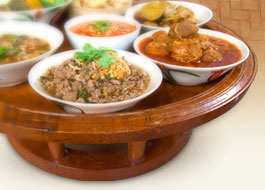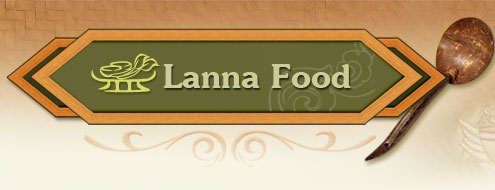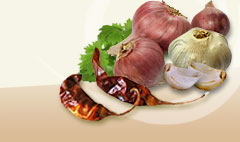Santol |
|
|
 | Sandoricum koetijape |
|
| |
 | Meliaceae |
|
| |
 | Sentul, santol, red santol, yellow santol |
|
| |
 | Tian, lon, santhon (Southern), ma tong (Northern, Udon Thani), ma tuen, (Northern), satiya, satumao (Kanchana Diwiset, et al., 1999, p. 17) |
|
| |
 | Semi-evergreen tree up to 25 m. high, with dense, narrowly oval crown. Leaves, trifoliate, mature leaves red. Flower small, yellow or greenish, branched cluster in leaf axils. Fruit globose, yellow, thick skinned, single large stone, densely covered with long matted hairs, 2-3 seeds each with a translucent jelly-like coating. (Kanchana Diwiset, et al., 1999, p. 17) |
|
| |
 |

Food: Lanna people use the fruit to make tam krathon or add it to kaeng hang le instead of tamarind for a sour taste. |

Leaves induce sweating, can be boiled to bath with to relieve fever and skin diseases.
Roots treat diarrhea, dysentery, fever (Kanchana Diwiset, et al., 1999, p. 17)
|
|
| |
|
|
| |
 |
Aruni Wisetsuk, et al., comp. (1999). Phak Phuen Ban Phak Tai. Kanchana Diwiset, ed. Nonthaburi: Project of Text Development, Institute of Traditional Thai Medicine, Foundation for Text Development of Traditional Thai Medicine. |
|
| |
|
|




